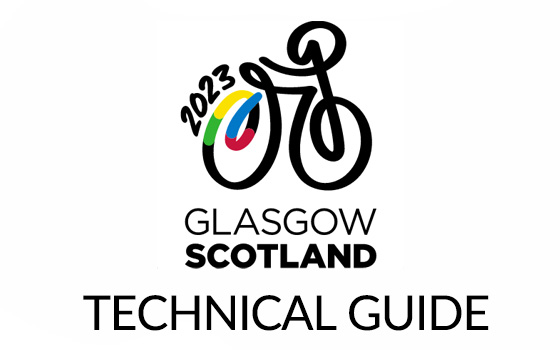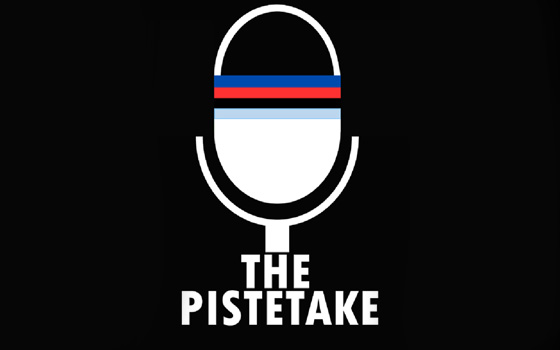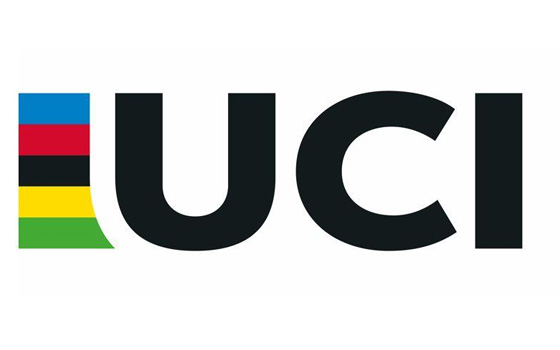Track Cycling Training - Energy & Hydration
The importance of hydration cannot be overestimated. The body is comprised of over 70% water and it is essential to life and function. To emphasise the importance of water, the body is able to survive for longer periods without food than without fluid.
Proper hydration allows the body to:
Maintain body temperature
Maintain blood pressure and volume
Maintain adequate sweat rates for cooling
Maintain stroke volume (the amount of blood the heart pumps per beat)
Prevent cramping
Prevent mental fatigue
Prevent heat exhaustion
Prevent circulatory collapse and stroke
Prevent death
From the above list, it becomes obvious how severe the consequences of being dehydrated can be. Table 4 below documents how varying levels of dehydration may affect your performance and well being.
Dehydration levels and effects on physiology (Table 4)
% of dehydration as compared to body weight - Physiological
2% - Impaired Performance
4% - Capacity for Muscle Work Declines
5% - Heat Exhaustion
7% - Hallucination
10% - Circulatory Collapse, Heat Stroke, Death
More specifically, in relation to sporting activities a loss of 3-5% causes a decrease in reaction times, sweat rate, muscular endurance and motor performance (muscle movement). The reasons for these side effects are due to a loss of essential electrolytes and blood volume. Electrolytes are molecules such as sodium and potassium (known as ions) which have an electrical charge within the body (hence the term electrolyte). It is the movement of these ions which allow such things as muscular contraction to occur. The influx (or entering) of sodium into the muscle cell increases its electrical charge and allows contraction whereas the efflux (exiting) of potassium allows the removal of this charge and the cessation of the contraction. This works by differing concentrations of ions inside and outside of the cell. When there is a loss of electrolytes, these concentrations are upset and thus muscular function declines. Therefore when rehydrating it is important to replace not only water but also electrolytes.
When there is a loss of blood volume due to dehydration it becomes more difficult for the body to deliver oxygen, nutrients and other vital factors as well as remove waste products such as lactic acid and CO2 from the muscle. Again this in itself is enough for the individual to feel enough discomfort and cease exercising. Another issue with a drop in blood volume is that this is coupled with increased blood pressure and decreased stroke volume. Stroke volume is the amount of blood, and therefore oxygen and nutrients that the heart pumps per beat into the systemic circuit (i.e. limbs and organs). Furthermore, as blood contains many molecules and compounds such as glucose, red blood cells and white blood cells, when the bloods water content is lowered through dehydration, the blood becomes more viscous. This causes more friction when passing though veins and arteries and the vascular network of the body, which is what causes a rise in blood pressure. This can result in death as the strain placed on the heart leads to cardiovascular failure, stroke or heart attack. This has occurred in sports such as the Tour de France.
There are varying formulations, which have been designed for the athlete to optimise both hydration and refuelling; these are known as, isotonic, hypertonic and hypotonic.
Isotonic drinks contain the same concentration of carbohydrate and electrolytes as the bodys own fluids. As such, isotonic drinks are considered to have the same osmolality as the bodys own fluid and are therefore absorbed quicker than water into the system. Most supplements contain a concentration of glucose between 6-8g per 100ml (or a concentration of between 6-8%). This is considered the optimum solution for rehydration and refuelling during exercise.
Hypertonic drinks are those which contain a greater concentration of carbohydrate and electrolytes than body fluid. As the osmolality is higher than the bodys own fluids, they are absorbed at a slower rate than water or isotonic drinks. These drinks must contain more than 8g of carbohydrate per 100ml of water, or over 8%. Due to their high carbohydrate content and slower gastric emptying rate (meaning absorption or release from the gastrointestinal tract), these drinks are very beneficial after exercise for glycogen (body carbohydrate) replenishment and fluid replacement, where a slower rate is more desirable avoiding a flooding effect which dilutes the bodys electrolytes causing up-regulated dieresis (excretion of water from the body).
Hypotonic drinks are those drinks which contain less carbohydrate and electrolytes than body fluids. These may sometimes have an isotonic level of electrolytes with a hypotonic level of carbohydrate (even sometimes zero). These products are best suited to those looking to optimise hydration without the added calories or carbohydrate; for instance those athletes dieting to make weight (i.e. martial arts or boxing) or a competitive bodybuilder preparing for competition. Like isotonic drinks, these are absorbed more quickly than plain water or hypertonic drinks and are best used before or during exercise.
When considering hydration or rehydration, the athlete should consider several factors; tolerance, time of consumption and dietary needs. For example someone on a carbohydrate/calorie restricted diet may wish to limit these in their rehydration plan.
However, carbohydrate is the bodys main source of energy whilst exercising, and is in fact the bodys preferred fuel source as it is the most easily used, therefore the replacement of carbohydrate is essential for optimum performance. Both hypertonic and isotonic drinks feel heavy on some athletes stomachs and give them an urging feeling. Similarly, the amount of water digested can make the stomach feel bloated. For optimal hydration during sporting activity, the below is recommended;
Before physical activity 500-600ml of water or a chosen sports drink should be consumed, with a further 200-300ml 20 minutes prior to exercise.
During the activity 200-300ml should be consumed every 20 minutes achieved by sipping frequently, to ensure fluid and electrolyte replacement.
After physical activity allow 2 hours for rehydration, this again should be achieved by sipping on fluids. Taking onboard larger quantities in a single sitting can overload the system further diluting electrolytes and causing water loss by flooding the system.
Over recent years, the sports supplement industry have developed advanced hydration products that are designed to be used pre/during/post event, with the goal of maintaining optimal performance, recovery as well hydration. For most endurance athletes muscle recovery is a major issue, so therefore the addition of a fast digesting protein such as whey will aid the user ability in recovery for their next session. Additionally the benefits of antioxidants is hugely important, particularly for those involved in ultra endurance events. During aerobic respiration the production of free radicals within the body is increased, under normal conditions the body has enough antioxidants to render free radicals harmless. However during very intense exercise, the body may not be able to cope so the addition of antioxidants well help combat this problem.
Proper hydration allows the body to:
Maintain body temperature
Maintain blood pressure and volume
Maintain adequate sweat rates for cooling
Maintain stroke volume (the amount of blood the heart pumps per beat)
Prevent cramping
Prevent mental fatigue
Prevent heat exhaustion
Prevent circulatory collapse and stroke
Prevent death
From the above list, it becomes obvious how severe the consequences of being dehydrated can be. Table 4 below documents how varying levels of dehydration may affect your performance and well being.
Dehydration levels and effects on physiology (Table 4)
% of dehydration as compared to body weight - Physiological
2% - Impaired Performance
4% - Capacity for Muscle Work Declines
5% - Heat Exhaustion
7% - Hallucination
10% - Circulatory Collapse, Heat Stroke, Death
More specifically, in relation to sporting activities a loss of 3-5% causes a decrease in reaction times, sweat rate, muscular endurance and motor performance (muscle movement). The reasons for these side effects are due to a loss of essential electrolytes and blood volume. Electrolytes are molecules such as sodium and potassium (known as ions) which have an electrical charge within the body (hence the term electrolyte). It is the movement of these ions which allow such things as muscular contraction to occur. The influx (or entering) of sodium into the muscle cell increases its electrical charge and allows contraction whereas the efflux (exiting) of potassium allows the removal of this charge and the cessation of the contraction. This works by differing concentrations of ions inside and outside of the cell. When there is a loss of electrolytes, these concentrations are upset and thus muscular function declines. Therefore when rehydrating it is important to replace not only water but also electrolytes.
When there is a loss of blood volume due to dehydration it becomes more difficult for the body to deliver oxygen, nutrients and other vital factors as well as remove waste products such as lactic acid and CO2 from the muscle. Again this in itself is enough for the individual to feel enough discomfort and cease exercising. Another issue with a drop in blood volume is that this is coupled with increased blood pressure and decreased stroke volume. Stroke volume is the amount of blood, and therefore oxygen and nutrients that the heart pumps per beat into the systemic circuit (i.e. limbs and organs). Furthermore, as blood contains many molecules and compounds such as glucose, red blood cells and white blood cells, when the bloods water content is lowered through dehydration, the blood becomes more viscous. This causes more friction when passing though veins and arteries and the vascular network of the body, which is what causes a rise in blood pressure. This can result in death as the strain placed on the heart leads to cardiovascular failure, stroke or heart attack. This has occurred in sports such as the Tour de France.
There are varying formulations, which have been designed for the athlete to optimise both hydration and refuelling; these are known as, isotonic, hypertonic and hypotonic.
Isotonic drinks contain the same concentration of carbohydrate and electrolytes as the bodys own fluids. As such, isotonic drinks are considered to have the same osmolality as the bodys own fluid and are therefore absorbed quicker than water into the system. Most supplements contain a concentration of glucose between 6-8g per 100ml (or a concentration of between 6-8%). This is considered the optimum solution for rehydration and refuelling during exercise.
Hypertonic drinks are those which contain a greater concentration of carbohydrate and electrolytes than body fluid. As the osmolality is higher than the bodys own fluids, they are absorbed at a slower rate than water or isotonic drinks. These drinks must contain more than 8g of carbohydrate per 100ml of water, or over 8%. Due to their high carbohydrate content and slower gastric emptying rate (meaning absorption or release from the gastrointestinal tract), these drinks are very beneficial after exercise for glycogen (body carbohydrate) replenishment and fluid replacement, where a slower rate is more desirable avoiding a flooding effect which dilutes the bodys electrolytes causing up-regulated dieresis (excretion of water from the body).
Hypotonic drinks are those drinks which contain less carbohydrate and electrolytes than body fluids. These may sometimes have an isotonic level of electrolytes with a hypotonic level of carbohydrate (even sometimes zero). These products are best suited to those looking to optimise hydration without the added calories or carbohydrate; for instance those athletes dieting to make weight (i.e. martial arts or boxing) or a competitive bodybuilder preparing for competition. Like isotonic drinks, these are absorbed more quickly than plain water or hypertonic drinks and are best used before or during exercise.
When considering hydration or rehydration, the athlete should consider several factors; tolerance, time of consumption and dietary needs. For example someone on a carbohydrate/calorie restricted diet may wish to limit these in their rehydration plan.
However, carbohydrate is the bodys main source of energy whilst exercising, and is in fact the bodys preferred fuel source as it is the most easily used, therefore the replacement of carbohydrate is essential for optimum performance. Both hypertonic and isotonic drinks feel heavy on some athletes stomachs and give them an urging feeling. Similarly, the amount of water digested can make the stomach feel bloated. For optimal hydration during sporting activity, the below is recommended;
Before physical activity 500-600ml of water or a chosen sports drink should be consumed, with a further 200-300ml 20 minutes prior to exercise.
During the activity 200-300ml should be consumed every 20 minutes achieved by sipping frequently, to ensure fluid and electrolyte replacement.
After physical activity allow 2 hours for rehydration, this again should be achieved by sipping on fluids. Taking onboard larger quantities in a single sitting can overload the system further diluting electrolytes and causing water loss by flooding the system.
Over recent years, the sports supplement industry have developed advanced hydration products that are designed to be used pre/during/post event, with the goal of maintaining optimal performance, recovery as well hydration. For most endurance athletes muscle recovery is a major issue, so therefore the addition of a fast digesting protein such as whey will aid the user ability in recovery for their next session. Additionally the benefits of antioxidants is hugely important, particularly for those involved in ultra endurance events. During aerobic respiration the production of free radicals within the body is increased, under normal conditions the body has enough antioxidants to render free radicals harmless. However during very intense exercise, the body may not be able to cope so the addition of antioxidants well help combat this problem.



